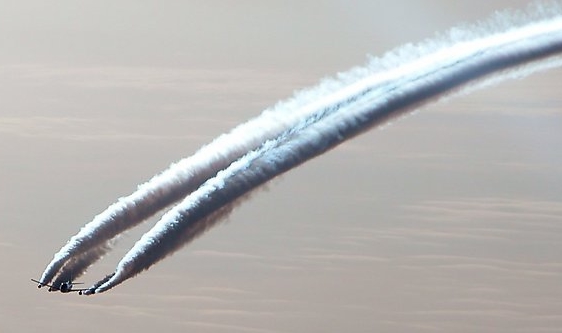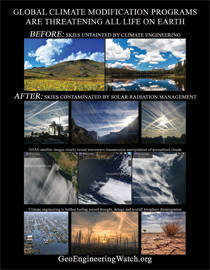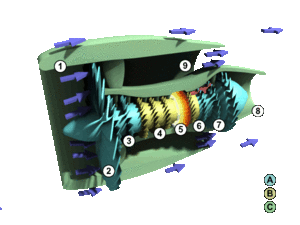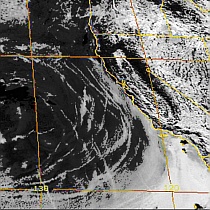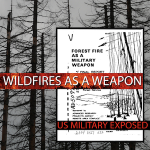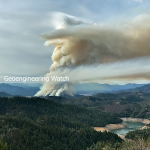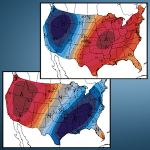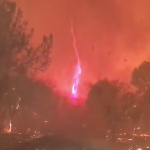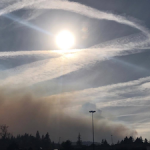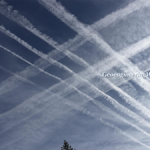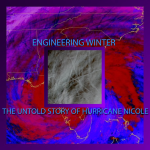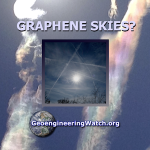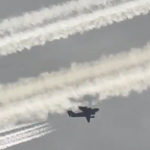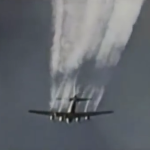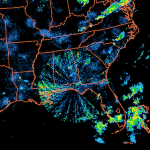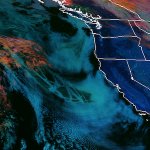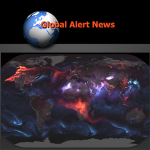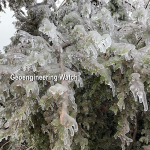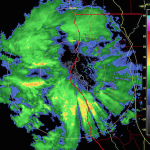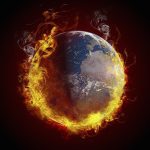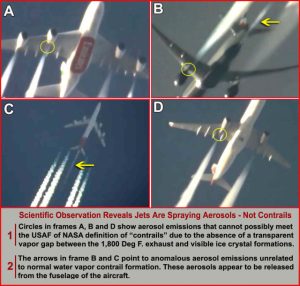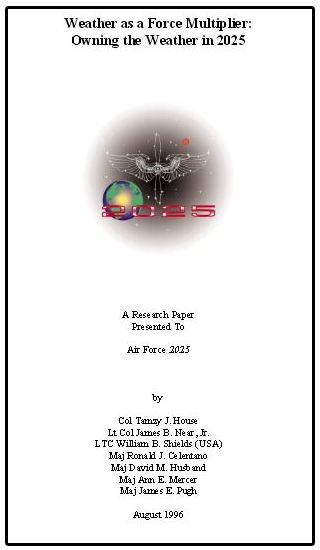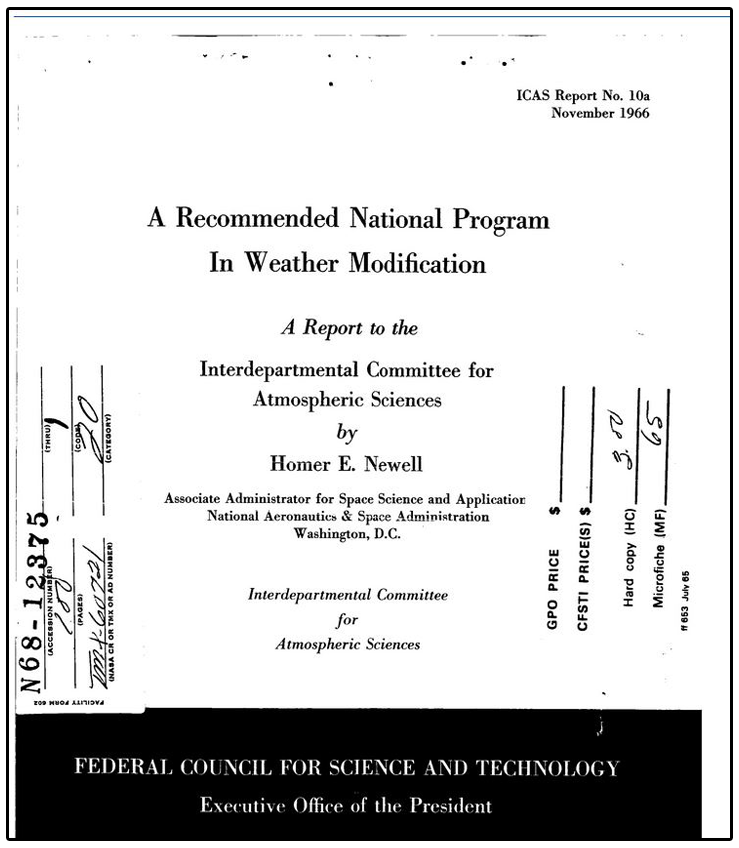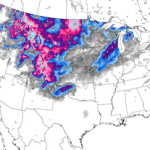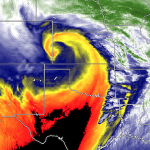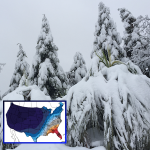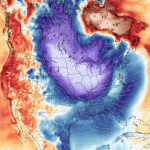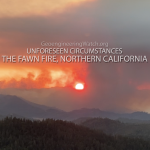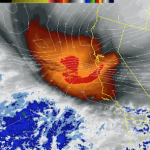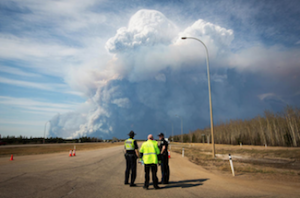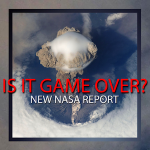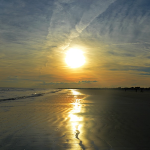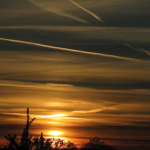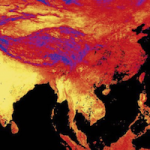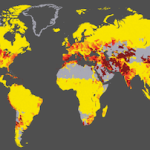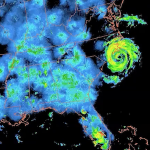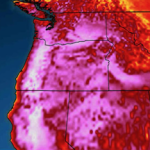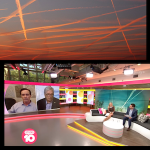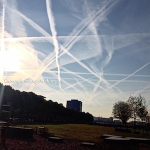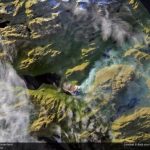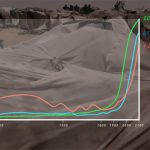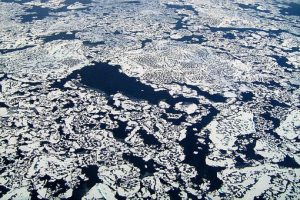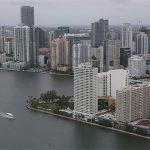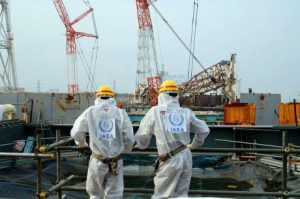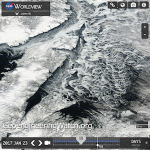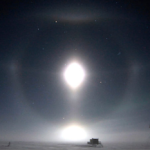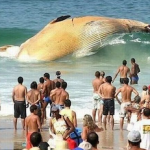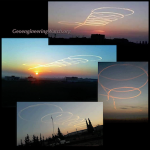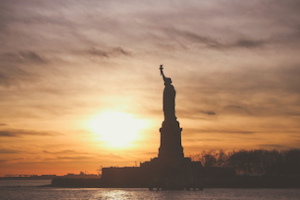Search Results for: bee colony collapse
If The Bees Die, We Will Follow

Bees are dying as are many species of insects around the globe. In some counties of Northern California, the insect populations have already declined some 90% as measured by a US Forest Service biologist. Aquatic insect life has seen the same level of decline in this region. Reports are coming in to geoengineeringwatch.org of similar insect die-offs from many locations around the globe. Though the scientific community is sounding the alarm about the die-off (at least in the case of the bees), they are even now completely in denial or oblivious to the highly toxic climate engineering and its effects on terrestrial life forms. I spoke to one of the head people at the National Bee Association and very carefully tried to inform her on the issue of global climate engineering and its likely connection to the bee die-off. She did not want to hear any data, and made it clear she had absolutely no intention of investigating. This was fall of 2013, the die off continues, and I have never heard a word back from this person. If the bees are succumbing to farm chemicals, why are they just as dead a thousand miles into the wilderness? If the die-off is from the cold winter in the US East (completely engineered winter storms), why are the bees just as dead in the west where record high temperatures have been the norm for too long to remember? So much of academia does not want to know the truth, but rather wishes to stay in comfort zones of total denial. I don’t say this lightly and I say if from a great deal of first hand experience. I have communicated with numerous individuals in academia from many different specialties and with very few exceptions I have found a near total absence of moral responsibility. Many of the so called “experts” are now in many ways accessories to the climate engineering crimes occurring in skies around the globe. Though there are still those scientists that are truly not aware of what is happening in our skies, for many others, their adamant denial of the climate engineering spraying and its effects is inexcusable.
Dane Wigington
geoengineeringwatch.org
Air Quality Official Confirms No Testing Is Done Which Could Show Geoengineering Contamination
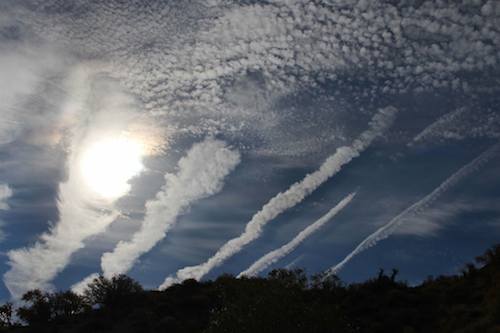
A Chattanooga air quality official confirms that their air testing agency is not designed to detect the nano particulate toxic heavy metal fallout from the ongoing global climate engineering programs. The same story was given by air quality officials in Shasta County California on July 15, 2014. In fact, the same is true for all official air quality testing, non of it is designed to even come close to detecting the nano particulate contamination. You cannot find what you are not looking for. This is the purpose of these so called “public protection” agencies, to convince the public that safeguards are in place which would alert citizens to any contamination problem. The whole air quality agency system is based on lies.
Dane Wigington
geoengineeringwatch.org
America’s Imperial Empire: The Sun Never Sets But The Mote Remains In The Emperor’s Eye
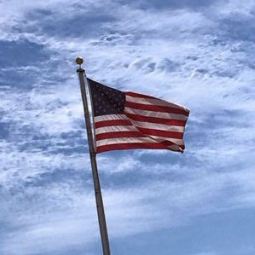
Source: Global Research, article by Prof. James Petras
Post-colonial empires are complex organizations. They are organized on a multi-tiered basis, ranging from relative autonomous national and regional allies to subservient vassal states, with variations in between.
In the contemporary period, the idea of empire does not operate as a stable global structure, though it may aspire and strive for such. While the US is the major imperial power, it does not dominate some leading global political-economic and military powers, like Russia and China.
Imperial powers, like the US, have well-established regional satellites but have also suffered setbacks and retreats from independent local economic and political challengers.
Empire is not a fixed structure rigidly embedded in military or economic institutions. It contains sets of competing forces and relations, which can change over time and circumstances. Moreover, imperial allies and clients do not operate through fixed patterns of submission. While there is submission to general agreements on ideology, military doctrine and economic policy identified with imperial rulers, there are cases of vassal states pursuing their own links with non-imperial markets, investors and exporters.
If the global world of imperial power is complex and indeterminate to some degree, so is the internal political, economic, administrative and military structure of the imperial state. The imperial political apparatus has become more heavily weighted on the side of security institutions, than diplomatic and representative bodies. Economic institutions are organized for overseas markets dominated by multi-national corporations against local markets and producers. ‘Market economy’ is a misnomer.
Military-security institutions and budgets utilize most state functionaries and public resources, subordinating markets and diplomatic institutions to military priorities.
While imperial state operations function through their military and civilian administrative apparatus, there are competitive socio-political-class, ethnic and military configurations to consider.
In analyzing the effective or ‘real power’ of the principle institutions of the imperial state, one must distinguish between goals and results, purpose and actual performance. Often commentators make sweeping statements about ‘imperial power and dominance’, while in fact, some policies may have ended in costly losses and retreats due to specific national, local or regional alignments.
Hence it is crucial to look closely at the imperial interaction between its various tiers of allies and adversaries in order to understand the immediate and long-term structures and direction of imperial state policy.
This essay will first describe the leader-follower imperial relationships in four zones: US-Western Europe-Canada, Asia-Pacific, Middle East-Africa and Latin America and identify the terrain of struggles and conflict. This will be followed by an examination of the contemporary ‘map of empire’. We will then contrast the alignment of forces between Western imperial allies and their current adversaries. In the final section we will look at the sources of fragmentation between the imperial state and economic globalization as well as the fissures and fallout between imperial allies and followers.
Tiers of Imperial Allies in the West
Western imperialism is a complex pyramidal structure where the dominant United States interacts through a five-tier system. There is a vertical and horizontal configuration of leader and follower states that cannot be understood through simplistic ‘solar system’ metaphors of ‘centers, semi-peripheries and peripheries’.
Western imperial power extends and overlaps from the first tier to the second, that is, from the United States to France, England, Germany, Italy and Canada. The scope and depth of US military, bureaucratic, political and economic institutions form the framework within which the followers operate.
The second tier of empire ties the top tier to the bottom tiers by providing military support and economic linkages, while securing autonomous levers to enlarge its own geo-political spheres.
The third tier of imperialism in the West comprises Poland, Scandinavia, the Low Countries and Baltic States. These are geographically and economically within the sphere of Western Europe and militarily dependent on US-NATO military dominance. The third tier is a heterogeneous group, ranging from highly advanced and sophisticated welfare-states like Sweden, Norway, Denmark, Holland and Belgium to relatively backward Baltic dependencies like Latvia, Estonia and Lithuania and Poland. They exercise few independent power initiatives and depend on protection from the Tier 1 and 2 imperial centers.
‘Tier four’ states include countries like Greece, Spain, Portugal, Hungary, Czech Republic and Slovakia, Bulgaria and Romania. These are essentially satellite nations, who follow the leader imperial countries, providing bases, troops and tourist resorts. In general, they have no independent voice or decision-making presence in regional or global conflicts. Despite their instability and the occasional outbursts of radical dissent, , the lower tier countries have yet to break with the higher tiers controlled by the EU and NATO hierarchy.
The fifth-tier satellites include recently fabricated mini-states like Albania, Kosovo, Macedonia, Slovenia and Croatia, which act as military bases, tourist havens and economic dependencies. They are the outcome of the first-tier and second-tier policies of ‘regime change’ and state dismemberment through NATO-led wars designed to destroy any remnant of the multi-ethnic social welfare states and degrade Russian influence, especially in Yugoslavia.
Mapping the leader-follower structure of the Western empire depends on the distribution of military resources and their location along the Russian border. The US-EU Empire faces the problem of meeting rising economic demands from the multi-tiered empire, which has exceeded their capacity. This had led to shifting trade alliances and independent pressure to ‘go beyond’the dictates of the imperial leaders.
Leader imperial states have tightened economic and political control over their followers – especially when the military consequences of empire have disrupted everyday life, security and the economy. An ongoing example is the flood of millions of desperate refugees entering Europe, as a result of US imperial war policies in the Middle East and North Africa. This mass influx threatens the political and social stability of Europe. Following the US putsch in the Ukraine and the inevitable response from Moscow, Washington ordered an economic blockade of Russia. The economic consequences of US-imposed sanctions against the giant Russian market has severely affected European exports, especially agriculture and heavy industry and caused instability in the energy market which was dominated by the now banned Russian petroleum and gas producers.
The Eastern Imperial Empire
The US imperial design in East Asia is vastly different in structure, allies and adversaries from that in the West. The leaders and followers are very heterogeneous in the East. The multi-tier US Empire in Asia is designed to undermine and eventually dominate North Korea and China.
Since the Second World War, the US has been the center of the Pacific empire. It also suffered serious military setbacks in Korea and Indo-China. With the aid of its multi-tiered auxiliaries, the US has recovered its influence in Indo-China and South Korea.
The US position, as the first-tier imperial power, is sustained by second-tier imperial allies, such as Australia, New Zealand, India and Japan.
These second-tier allies are diverse entities. For example, the Indian regime is a reticent latecomer to the US Empire and still retains a higher degree of autonomy in dealing with China. In contrast, while Australia and New Zealand retained their dependent military ties with the US, they are increasingly dependent on Chinese commodity markets and investments.
Japan, a powerful traditional economic ally of the US, remains a weak military satellite of the US-Asian Empire.
Third-tier countries include South Korea, Taiwan, Philippines, Malaysia, Thailand and Indonesia. South Korea is the US’s most important military dependency, despite which it has moved steadily closer to the Chinese market, as has the populous Indonesian Republic.
Taiwan, while a military dependency of the US, has stronger ethnic and economic links to China than the US.
The Philippines is a backward US military vassal-state and former colony, which retains its legacy as an imperial enclave against China. Thailand and Malaysia have remained as third-tier imperial auxiliaries, subject to occasional nationalist or democratic popular upsurges.
The fourth-tier countries within US East Asian Empire are the least reliable because they are relatively ‘new associates’. Vietnam, Cambodia, Laos and Myanmar have transformed from independent statist economies to US-Japanese and Chinese-centered markets, financial and military dependencies.
The US Empire has focus on confronting China through its military, controlling its South China trading routes and trying to form regional economic trade agreements, which exclude China. However, the imperial multi-tiered structure has been mostly limited to various US military harassment and joint ‘war games’ exercises with its clients and ‘allies’. This has had minimal economic input from even their closest allies. The US Eastern Empire has lost significant economic counterparts because of its confrontational approach to China. Its provocative trade-pacts have failed to undermine China’s dynamic economy and trade.
The US Eastern Empire may dominate its multi-tiered allies, vassals and recent converts through its military. It may succeed in provoking a serious military confrontation with China. But it has failed to re-establish a dominant structure within Asia to sustain US imperial superiority in the event of a war.
China drives the growth and dynamism of Asia and is the vital market for regional products as well as a crucial supplier of minerals, precious metals, industrial products, high tech and service activity throughout the region.
The US has occasionally turned to its ‘fifth-tier’ allies among non-state entities in Tibet and Hong Kong and among ethno-Islamist terrorist-separatist groups in Western China, using ‘human rights’ propaganda, but these have had no significant impact in weakening China or undermining its regional influence.
The Eastern Empire can wield none of the economic leverage in China that the Western empire has with Russia. China has established more effective economic relations in Asia than Russia has with the West. However, Russia has greater military capability and a more committed political will to push back Western imperial military threats than China. In recent years, Beijing has adopted a policy of strengthening its high tech military and maritime capabilities. In the wake of the US putsch in the Ukraine and the West’s economic sanctions against Russia, Moscow has been forced to bolster strategic military-economic ties with China. Joint security exercises between Russia and China , as well as greater trade, pose formidable counter-weights to the multi-tiered alliances linking the US and EU to Japan, Australia and South Korea.
In other words, the diverse geographic multi-tiered US imperial structures in the East do not and cannot, dominate a strategic top-tiered alliance of Russia and China, despite their lack of other strong military allies and client states.
If we look beyond European and Asian spheres of Empire to the Middle East and Latin America, the US imperial presence is subject to rapidly evolving power relations. We cannot simply add or subtract from the US and Russian and Chinese rivalries, because these do not necessarily add up to a new ‘imperial’ or ‘autonomous’ center of power.
Imperial Power in the Middle East: The Multi-Tiered Empire in Retreat
The US imperial empire in the Middle East occupies a pivotal point between West and East; between the top and secondary tiers of empire; between Islamic and anti-Islamic alliances.
If we extend the ‘Middle East’ to include South Asia and North Africa we capture the dimensions of the Western imperial quest for supremacy.
The imperial empire in the Middle East reflects US and Western European tiers of power as they interact with local counterparts and satellite states.
The US-EU top tiers link their goals of encircling and undermining Russia and regional adversaries, like Iran, with the regional ambitions of their NATO ally, Turkey.
Imperial powers in the Middle East and North Africa operate through local allies, auxiliaries and satellites as they compete for territorial fragments and power bases following the US ‘wars for regime changes’.
With the US at the top, the European Union, Israel, Turkey and Saudi Arabia comprise the second-tier allies. Egypt, Tunisia, Iraq and Jordan, which are financial and political dependencies of the empire, rank as third-tier. The fourth-tier includes the Gulf states, the Kurd war lords, Lebanese and Yemeni local puppets of the Saudi Monarchy and Israel’s client Palestinian Bantustan in the West Bank.
Saudi and Western-funded regional terrorist groups aspire to fourth-tier membership following a successful ‘regime change’ and territorial fragmentation in Syria.
The terrorist enclaves are located in Syria, Iraq and Libya and play a ‘specific and multi-purpose’ role in undermining adversaries in order to restore imperial dominance.
The Middle East Empire is the least stable region and the most susceptible to internal rivalries.
Israel exercises a unique and unrivaled voice in securing US financial and military resources and political support for its brutal colonial control over Palestine and Syrian territories and captive populations. Saudi Arabia finances and arms autonomous Islamist terrorist groups as part of their policy of advancing the kingdom’s political- territorial designs in Pakistan, Yemen, Afghanistan, Iraq, Syria, Iran and the Gulf. Turkey has its own regional ambitions and terrorist mercenaries. Within this volatile context, the US Empire finds itself competing with its auxiliaries for control over the same Middle East clients.
The Middle East Empire is fraught with powerful adversaries at each point of contention. The huge, independent nation of Iran stands as a powerful obstacle to the West, Saudis, and Israel and competes for influence among satellites in the Gulf, Yemen, Iraq, Syria and Lebanon. Hezbollah, a powerful nationalist group within Lebanon, has played a crucial role defending Syria against dismemberment and is linked with Iran against Israeli intervention. Russia has military and trade relations with Syria and Iran in opposition to the Western imperial alliance. Meanwhile, the US imperial satellite states in Afghanistan, Iraq, Libya, and Egypt are rapidly disintegrating in the face of gross corruption, Islamist resurgence, policy incompetence and economic crises.
To speak formally of a ‘Western imperial empire’ in vast sections of the Middle East and North Africa is a misnomer for several reasons:
In Afghanistan, the Nationalist-Islamist Taliban and its allies control most of the country except for a few garrison cities.
Yemen, Libya and Iraq are battleground states, contested terrain with nothing remotely resembling a functioning imperial domain. Iraq is under siege from the North by Kurds, the center by ISIS, the South by nationalist Shi’a militias and mass organizations in contention with grossly corrupt US imperial-backed puppets in Baghdad.
The US-EU mercenaries in Syria have been defeated by Syrian-Russian-Hezbollah-Iranian forces aided by independent Kurds.
Israel behaves more like a militarist ‘settler’ predator usurping historical Palestine than a reliable imperial collaborator.
So far, the empire project in the Middle East and North Africa has been the costliest and least successful for Western imperialism. First and foremost, responsibility for the current Middle East imperial debacle falls directly on the top tier political and military leaders who have pursued policies and strategies (regime change and national dismemberment) incompatible with imperial precepts that normally guide empires.
The top tier of the US imperial-military elite follows Israeli military prerogatives, as dictated by the Zionist Power Configuration (ZPC) embedded within the US state apparatus. Their policy has been to destroy Islamic and Arab-nationalist structures and institutions of power – not conquer and reconfigure them to be absorbed into Western imperial institutions . . . as the US was able to do in Asia and Europe. This parrots the Israeli- settler policy of ‘erasure’ and has made the region totally unstable for imperial trade. The wanton dismemberment of the whole social-political-security institutional structure of Iraq is a prime example of the Israeli policy of ‘erasure’ promoted by US Zionist advisers on a grand scale. The same advisers remain within the top tier imperial decision-making apparatus despite 15 years of abject failure.
Western empire’s multi-tier structure, from the US and Western Europe at the top to Kosovo at the bottom, have followed imperial imperatives. In contrast Israeli imperatives direct US military power into perpetual war in the Middle East through the influential ZPC.
This divergent path and the inability to change course and rectify imperial policy has brought disastrous defeats, which have repercussions throughout the global empire, especially freeing up competitors and rivals in Asia and Latin America.
Tiers of Empire in Latin America
The US imperial empire expanded in Central America and the Caribbean during most of the 19th CENTURY and reigned supreme in the first half of the 20th century. The exceptions included the nationalist revolutions in Haiti in the early 19th century and Paraguay in the mid-19th century. After the US Civil War, the British Empire in Latin America was replaced by the US, which established a dominant position in the region, except during the successful Mexican Revolution.
Several major challenges have emerged to US imperial dominations in the middle of the 20th century.
The centerpiece of anti-imperialism was the Cuban Revolution in 1959, which provided political, ideological and material backing to a continent-wide challenge. Earlier a socialist government emerged in Guyana in 1953 but was overthrown.
In 1965, the Dominican Revolution challenged a brutal US backed-dictator but was defeated by a direct US invasion.
In 1970-73 a democratic socialist government was elected in Chile and overthrown by a bloody CIA coup.
In 1971 a ‘workers and peasants’ coalition backed a nationalist military government in Bolivia only to be ousted by a US-backed military coup.
In Argentina (Peron), Brazil (Goulart) and Peru (Alvarez), nationalist-populist governments, opposed to US imperialism, were elected between the middle 1960’s to the mid 1970’s. Each were overthrown by US-military coups. Apart from the Cuban revolution, the US Empire successfully counter-attacked, relying on US and local business elites to back the military juntas in repressing anti-imperialist and nationalist political parties and movements.
The US Empire re-established its hegemony, based on a multi-tiered military and market directorate, headed at the top by the US. Argentina, Brazil and Chile comprised the second-tier, a group of military dictatorships engaged in large-scale state terror and death squad assassinations and forcing hundreds of thousands into exile and prison.
The third-tier was based on US surrogates, generals and oligarch-families in Colombia, Venezuela, Peru, Bolivia, Paraguay and Uruguay.
The fourth-tier of satellite regimes included Central-America, except Nicaragua, and all of the Caribbean, except Cuba and (briefly) Grenada.
The US Empire ruled through predator allies and satellite oligarchs and successfully imposed a uniform imperial structure based on neo-liberal policies. US-centered regional trade, investment and military pacts ensured its imperial supremacy, through which they sought to blockade and overthrow the Cuban revolution. The US imperialist system reached its high point between the mid-1970’s to the late 1990’s – the Golden Age of Plunder. After the pillage of the 1990’s, the empire faced a massive wave of challenges from popular uprisings, electoral changes and the collapse of the corrupt auxiliary neo-liberal regimes.
The US imperial empire faced powerful challenges from popular-nationalist regimes from 1999 to 2006 in Venezuela, Argentina, Brazil, Bolivia and Ecuador. Dissident liberal-nationalist governments in Uruguay, Honduras and Paraguay posed their own challenges to imperial control.
The US empire was bogged down in multiple imperial wars in the Middle East (Iraq, Libya, Syria) Asia (Afghanistan) and Europe (Ukraine, Georgia, Yugoslavia), which undermined its capacity to intervene militarily in Latin America.
Cuba, the hemispheric center of the anti-imperialist politics, received economic aid from Venezuela and strengthened its diplomatic, trade and security alliances with the anti-interventionist center-left. This provided an impetus to the formation of independent regional trade organizations, which traded heavily with US imperial rivals, China, Iran and Russia during the ‘commodity boom’.
While the US imperial empire in Latin America was in retreat, it had not suffered a strategic defeat because it maintained its powerful business, political and state auxiliary structures, which were ready to regroup and counter-attack at the ‘right moment’ – the end of the ‘global commodity boom’.
By the end of the first decade of the 21st century, the US Empire counter-attacked, with their political-military clients taking power in the weakest links, Honduras and Paraguay. Since then, neo-liberal extremists have been elected to the presidency in Argentina; a corrupt oligarch-led congress has impeached the President of Brazil; and the ground is being prepared to seize control in Venezuela.
The US Empire re-emerged in Latin America after a decade-long hiatus with a new or re-invigorated multi-tier structure.
At the top-tier is the United States, dependent on enforcement of its control through satellite military and business elites among the second-tier countries, Colombia, Argentina, Brazil and Mexico.
At the third-tier are Chile, Peru, Uruguay and the business-political elites in Venezuela, linked to the US and tier-twocountries.
The fourth-tier is dominated by weak submissive regimes in Central America (Panama, Guatemala, Honduras and El Salvador), the Caribbean (especially Santa Domingo, Haiti and Jamaica) and Paraguay.
The US has re-assembled its imperial structure in Latin American rapidly, creating an assemblage which is extremely fragile, incoherent and subject to disintegration.
The new neo-liberal regime in Argentine, the centerpiece of the empire, immediately faces the triple threat of mass unrest, economic crisis and a weak regime under siege.
Brazil’s new US neo-liberal constellation of characters are all under indictment for corruption and facing trials, while economic recession and social polarization is undermining their ability to consolidate imperial control.
Venezuela’s rightwing auxiliaries lack the economic resources to escape the demise of the oil economy, hyperinflation and the virulent internecine conflicts within the Right.
The US imperial empire in Latin America could best operate through links with the Asian-Pacific trade pact. However, even with new Asian ties the Latin satellites exhibit none of their Asian counterparts’ stability. Moreover, China’s dominant economic role in both regions has limited US hegemony over the principal props of the empire.
The Myth of a US Global Empire
The ‘narrative’ of a US global empire is based on several profound misconceptions, which have distorted the capacity of the US to dominate world politics. The US regional empires operate in contested universes where powerful counter forces limit imperial dominance.
In Europe, Russia is a powerful counterforce, bolstered by its growing alliances in Asia (China), the Middle East (Iran) and, to a limited extent, by the BRIC countries.
Moreover, Washington’s multi-tiered allies in Europe have occasionally followed autonomous policies, which include Germany’s oil-gas independent agreements with Russia, eroding US efforts to undermine Moscow.
While it may appear that the ‘imperial military, banking, multi-national corporate structure’, at a high level of abstraction, operates within a common imperial enterprise, on issues of everyday policy-making, budgeting, war policies, trade agreements, diplomacy, subversion and the capitalist market-place there are multiple countervailing forces.
The empire’s multi-tiered allies have their own demands as well as sacrifices imposed on the US imperial center.
Internal members of the imperial structure define competing priorities via domestic power wielders.
The US Empire has extended its military operations to over 700 bases across the world but each operation has been subject to restraints and reversals.
US multi-nationals have multi-billion dollar operations but they are forced to adjust to the demands of counter-imperial powers (China). They evade almost a trillion dollars of US taxes while absorbing massive assets from the US Treasury in the form of subsidies, infrastructure and security arrangements.
In sum, while the sun may never set on the empire, the emperors have lost their sight.
Source: Global Research, article by Prof. James Petras
The Contrails Conspiracy Is Not Only Garbage, It’s Letting Aviation Off The Hook Too
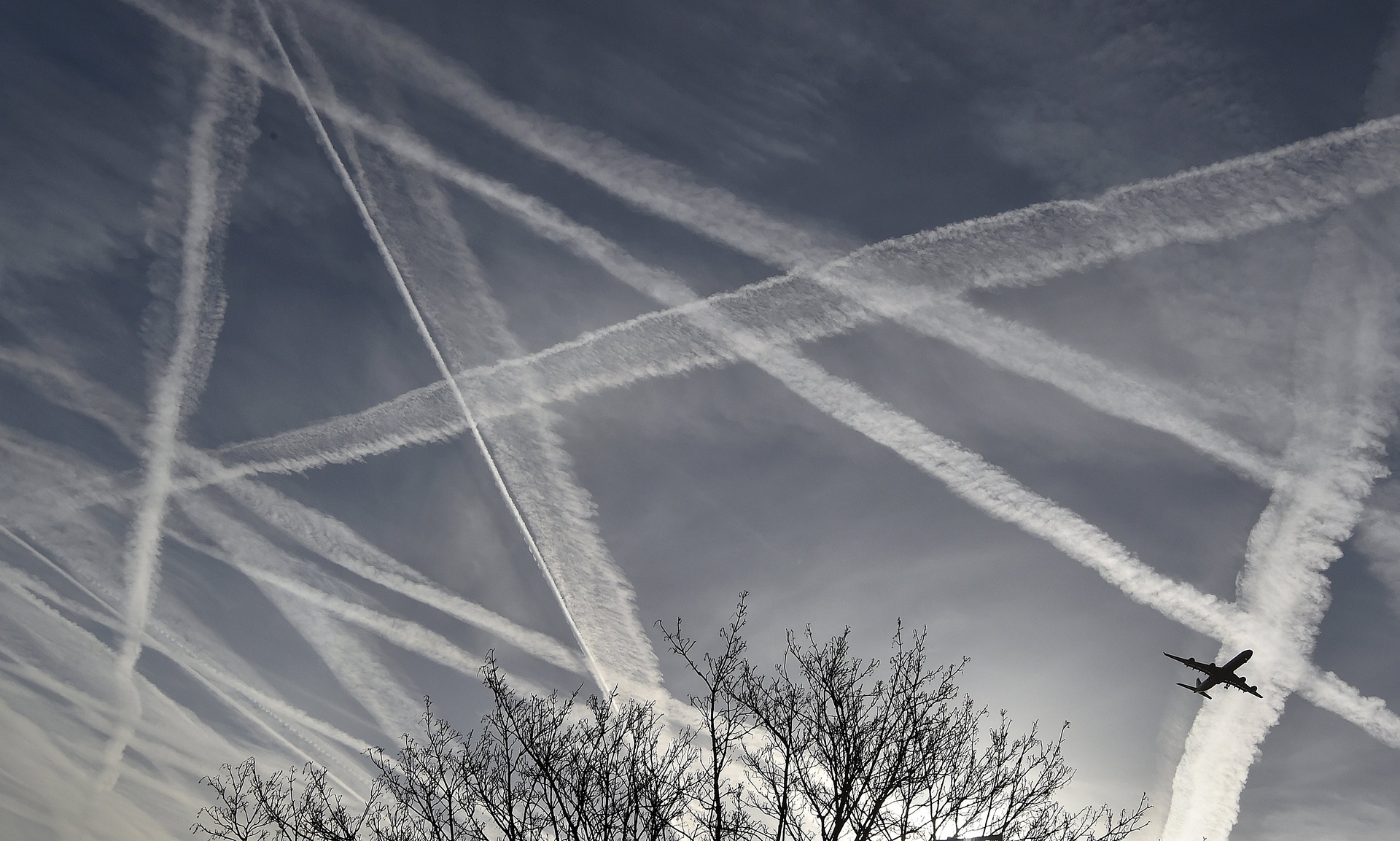
Source: The Disinformation Directory
Original story by George Monbiot in The Guardian: http://www.theguardian.com/environment/georgemonbiot/2015/dec/04/the-contrails-conspiracy-is-not-just-garbage-its-letting-aviation-off-the-hook
Response written by Marla Stair-Wood
 George Monbiot is concerned about airplane emissions. He is so concerned about aviation emissions, he penned numerous essays on the subject since 1996, when he became a columnist for The Guardian. One would think the armies of geoengineering planes flying the last few decades contributing even more to CO2 levels while dispersing tons of aerosols into the atmosphere would also greatly concern Monbiot; however, according to him, he totally dismissed and ignored the issue of ongoing climate engineering until lately, when his friends and an editor of a highly visible environmental magazine urged him to investigate and report. In his area of the U.K., the look-up.org.uk site appeared to be very vocal on the anti-Geoengineering front, so he chose (exclusively, so it appears) this site as his research source.
George Monbiot is concerned about airplane emissions. He is so concerned about aviation emissions, he penned numerous essays on the subject since 1996, when he became a columnist for The Guardian. One would think the armies of geoengineering planes flying the last few decades contributing even more to CO2 levels while dispersing tons of aerosols into the atmosphere would also greatly concern Monbiot; however, according to him, he totally dismissed and ignored the issue of ongoing climate engineering until lately, when his friends and an editor of a highly visible environmental magazine urged him to investigate and report. In his area of the U.K., the look-up.org.uk site appeared to be very vocal on the anti-Geoengineering front, so he chose (exclusively, so it appears) this site as his research source.
The result of Monbiot's investigation (loosely applied) is a December 4, 2015 essay entitled: “The contrails conspiracy is not only garbage, it’s letting aviation off the hook too”. http://www.theguardian.com/environment/georgemonbiot/2015/dec/04/the-contrails-conspiracy-is-not-just-garbage-its-letting-aviation-off-the-hook
The Big Unchill
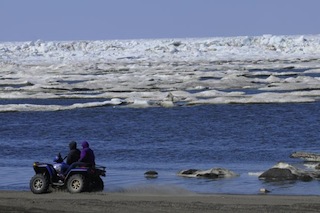
Source: The Boston Globe, written by David Abel
The Big Unchill
The Arctic ice is melting faster than ever recorded, the warmth tied to the emissions of modern life. But it is the ancient ways at the top of the world that are most at risk.
BARROW, Alaska — A mile off the coast of the continent’s northernmost city, Josh Jones gunned his four-wheeler over ridges of buckling ice and through pools of turquoise water, where normally there would be a vast sheen of ice and snow.
Escorted by an Eskimo guard toting a shotgun to protect them from roving polar bears, Jones and a fellow climate researcher were racing to retrieve scientific instruments that gauge the thickness of the ice, which they worried could be lost to the uncommonly rapid melt of the Arctic Ocean.
They were also in a race with much bigger stakes.
In previous years when making the trip out here to set up their observatory, temperatures had been so raw that Jones’s eyelids froze. On this day early last month, it was a balmy — for Barrow — 41 degrees. When they arrived at the observatory, which was surrounded by sprawling melt ponds, they stripped off their parkas and rolled up their sleeves.
Their wind turbine and other equipment had collapsed in the melting ice. They’d almost lost their all-terrain vehicle, too, when it lurched into a sinkhole and stalled in a knee-deep pool of slush.
“Not a good sign,” Jones deadpanned.
Here, as close to the top of the world as you can get in America, the signs are serious indeed: The Arctic Ocean is melting faster than at any time on record. This February, the sea ice that stretches from North America to Russia reached its lowest-known winter extent and began melting 15 days earlier than usual. That continued a three-decade trend that has seen the ocean’s ice lose about 65 percent of its mass and about half of its reach during the summer. In 20 or 30 more years, the Arctic Ocean could be nearly devoid of ice in the summer, climate scientists believe.



SOURCE: Stanford Report," September 30, 2014; Skeptical Science, "A Rough Guide to the Jet Stream"
James Abundis / Globe Staff
But the changes that are incipient here in New England are already acute in Barrow, where the average temperature has risen 3.6 degrees since 1921 — more than twice the rise of average global temperatures.
“Barrow is among the fastest-warming land areas in the world,” said Rick Thoman, a climate scientist at the National Weather Service in Fairbanks.




SOURCE: National Weather Service Alaska Region
James Abundis / Globe Staff
And the effects on the way of life here — long preserved against change by remoteness and the desperate cold — have been profound. Life as they knew it for the 4,300 who call this treeless tract of tundra 300 miles north of the Arctic Circle home is beginning to feel irretrievable.
No one knows that better than the Iñupiat Eskimos, whose ancestors first settled here 1,500 years ago and who still constitute more than half of the local population on this stark, triangular spit of land where beached whale bones litter the black gravel shore.
The Iñupiat have long survived brutal winters when the sun doesn’t rise over the snowbound city of wooden homes for two months and summers when the ground turns to spongy black mud and the sun never sets. No roads lead to Barrow from elsewhere in Alaska, so they have learned to provide for themselves.
But now they are watching as the sheets of ice that have long encased the nearby Chukchi and Beaufort seas — where they hunt seals, walruses, and whales — are melting significantly earlier and returning later than ever before. The shores off Barrow typically remained covered in ice well into July and would refreeze in October.
Melt ponds now often start forming in May, and the massive sheets now typically break up in June. Since 2002, the ocean has not frozen over in October, according to the National Weather Service.
The changing climate is having a mounting effect on men such as Harry Brower Jr., who grew up hunting bowhead whales, ringed seals, king eiders, and other prey to feed his family. The 58-year-old captain of an umiak, a traditional seal-skin whaling boat, has found he can no longer rely on lessons passed through the generations.
Hunting is such a part of the city’s history that the Iñupiat name for Barrow is Ukpeagvik, which means “the place where we hunt Snowy Owls.” But all the time-tested patterns along the North Slope of Alaska — the currents, weather patterns, ice thickness, and the timing of whale migrations, among other things — have become less predictable.
“Everything’s changing,” Brower said. “It requires us to be more observant.”
Whales now often pass through local waters earlier in the year than they used to, and Brower and his crew have had to hunt in significantly less sunlight. That has made it more dangerous to haul their umiaks to the distant edges of the ice, where they build shelters and spend weeks stalking the massive mammals. Several years ago, he said, one crew got stranded when an ice sheet broke off unexpectedly. About 40 men had to be rescued by helicopter, and they lost all of their equipment.
“If we don’t have access to the ice, we can’t hunt,” Brower said.

Harry Brower Jr., captain of a whaling boat, has found that because of climate change, he can no longer rely on hunting lessons passed through the generations. David L. Ryan/Globe Staff
The warming has also forced local officials to do what they can to defend Barrow, where the natural forces are visible in the beached, broken fishing boats lining the shore and muted, weather-beaten homes mired in brown pools of ice melt.
Edward Itta, who served for much of the past decade as mayor of the region that includes Barrow, said the increasingly unsettled earth has destabilized roads and triggered expensive failures in water and sewer systems.
He and other residents are also concerned that the permafrost, the frozen ground underlying Barrow, is thawing at greater depths and releasing a surging amount of methane — a greenhouse gas 25 times more potent than carbon dioxide.
The melting earth has flooded and ruined residents’ ice cellars, which they carve out of the frozen ground, forcing them to scramble to prevent their prized stocks of whale and seal meat from spoiling.
“A lot of things we were taught don’t really apply anymore,” Itta said.
Last year, the 69-year-old was shocked when his 22-foot aluminum motorboat couldn’t make it through coastal waters and up rivers for his annual summer hunting trip. The winds — unlike anything he had experienced before — were too strong, and the rivers, whose waters are being absorbed by the thawing ground, were too shallow.
“The change is real, and we’re feeling it accelerating,” he said.

Officials have sought to protect Barrow, Alaska, which is fewer than 15 feet above sea level, by moving municipal buildings and lining the coast with berms and sandbags. David L. Ryan/Globe Staff
The frozen Arctic Ocean has long served as something of a heat vent for the rest of the planet, its millions of square miles of snow-covered ice reflecting sunlight back into space. But the receding ice has meant more energy is being absorbed by the open ocean, a self-reinforcing cycle that has increased sea and land temperatures, according to the National Snow and Ice Data Center in Boulder, Colo.
The warming has resulted in the surrounding tundra greening with a proliferation of lichens and shrubs. Walruses and polar bears are losing the icy habitat where they have always hunted, while migration patterns of marine life and some seabirds are also shifting.
Several miles offshore from Barrow on Cooper Island, the decimation of a colony of black guillemots provides a stark example of the destruction, said George Divoky, a zoologist who has spent the past 41 summers studying the seabird colony.
With coastal waters 6 degrees warmer in recent summers than when he started his study, the number of guillemots that nest on the island has plummeted by half as they struggle to find their primary source of food, Arctic cod, which have moved farther offshore in search of cooler, ice-filled waters, he said. Now, only about half as many chicks survive as once did.
“We’re watching a disaster unfolding,” Divoky said while waiting last month for a helicopter to ferry him the few miles from Barrow to the island because it was no longer safe to travel by snowmobile over the melting ice.
When he finally made it to the island, he found the guillemots were already laying their eggs — earlier than in any previous year of his study.

Josh Jones worked to get his ATV out of water on the ice near Barrow, Alaska. David L. Ryan/Globe Staff
Flooding is also a growing threat in Barrow. With less of a buffer from the ice sheets, which have long kept currents in check and buffered the coast, more powerful storms and waves have become common. As a result, many of the local beaches have been eroding twice as fast as they did in the 1950s, said Anne Jensen, an archeologist at the Barrow Arctic Research Center.



James Abundis / Globe Staff
“We’re seeing large amounts of land falling into the sea,” Jensen said while showing pictures in her cramped office of the eroding shore.
She worries that the city’s history, long preserved by the cold, dry conditions, is increasingly at risk. The warmer, wetter weather has accelerated the decomposition of bones, tools, and other relics of those who first settled in the area.
“We’re hitting a tipping point,” Jensen said. “Heritage that has been preserved for hundreds, if not thousands, of years is going to be lost in a matter of a few decades.”
Since Josh Jones’s team began tracking Barrow’s sea ice in 1999, the researchers have seen it thin by an average of 10 percent.
“That’s quite a big difference in such a short time,” said Andy Mahoney, a professor of geophysics who oversees the team’s research at the University of Alaska in Fairbanks.
The main source of melting used to be the sun beating on the ice, he said. Now, more of the melt comes from below, as the open ocean absorbs more sunlight and changing currents pulse the saltier, warmer waters of the North Atlantic through the Arctic.
As the researchers bored into the ice to take their final measurements, Mike Thomas, their guard, scanned the horizon for polar bears. Snacking on seal meat, he spoke of how years-old ice used to form towering ridges over the frozen ocean and how it was common for winter temperatures to plummet to 40 below or lower.
Jones told stories about previous trips on the ice when he had to use pliers to break the ice on a colleague’s mustache to help him breathe and how he once fell off his snowmobile into a moat of frigid water between the beach and the ice.
“It’s not something you want to repeat,” he said.
Late in the afternoon, with a sun that wouldn’t set for months still high in the sky, a cold front moved in, pelting the men with sleet. The researchers packed their equipment onto sleds and climbed back on their four-wheelers, sloshing through more melt ponds and slush on their way back to the solid ground of the beach.
Two weeks later, the ice pack melted and what remained began moving offshore — the earliest it had broken up in the past decade, according to the National Weather Service.
By the end of the month — Barrow’s warmest June on record — the remaining floes had drifted more than 10 miles out to sea, vanishing from view of the shore.
Source: The Boston Globe, written by David Abel
Racing Toward Total Extinction

While billions around the globe still occupy their time with completely meaningless distractions and entertainments, life on Earth is literally imploding. The level of mainstream media spin and omission in regard to what is unfolding is difficult to comprehend. The general public is all too willing to accept the factless facade that is fed to them day in and day out while life on Earth disintegrates around us all. Our collective future quite literally now rely on those that are awake and willing to help sound the alarm. Standing still and complaining to others about the converging catastrophes will not help our situation. We must all learn to effectively reach out to all the groups, organizations, and individuals that are still oblivious to the immediate peril we face. Every single day matters.
Dane Wigington
geoengineeringwatch.org






